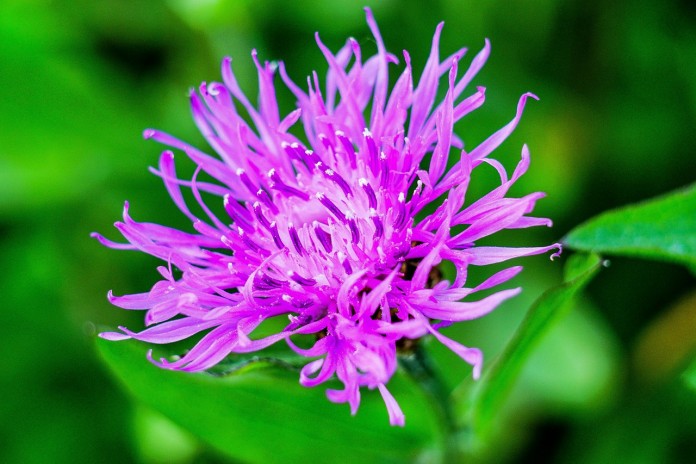Well, here we are in mid-September already, and, like most years, pastures have slowed down, and water supplies, too. I know that here in Noble County we’ve been blessed with a little more rain than some, but it’s September and it’s always dry.
This is gonna sound a little crazy, but, what would you do if your pasture or hay field had no grass left in it? I told you it sounds crazy, but in some cases it’s happened.
Here in the northeast corner of Noble County, there is an outbreak of a weed that is ruining some folks’ fields. If you haven’t heard of Spotted Knapweed, then consider yourself lucky.
Displace other plants
Left alone, this plant will displace native species, change plant community structure, and reduce forage for livestock. Spotted Knapweed is a native to the grassland steppes of Northern Asia, and somehow found its way to British Columbia around 1883.
By 1920, it had spread its way to Montana and eventually could be found in every county in the state. How it got to Southeastern Ohio is still unknown, but it sure is here.
Each mature plant yields between 500 and 4000 seeds and the seeds are viable for up to eight years. While there is nothing special about the seed itself, it seems to have the ability to jump on vehicles and equipment (the seed heads get caught when driving through), and dispersed miles away.
It may also be spread through contaminated seed and hay, and even fill-dirt and gravel.
Roadside mowing
Locally, it seems that roadside mowing spreads it. Driving the roads this time of year is an easy way to spot it.
Any hay made in these fields would only help spread the seeds. Although it only spreads by seeds, it is also allelopathic — it produces biochemicals that have a negative influence on other plants — and I wasn’t kidding when I mentioned that it will completely over-run some fields.
I did exaggerate a little on the pastures. Sheep and goats will keep it under control, cattle and horses will eat the leaves, but they prefer almost anything else. So now the question is, how do you get rid of it?
There have been lots of studies done, and a lot of them have been from Montana, including one that I am referencing called Biology, Ecology, and Management of Montana Knapweeds.
Preventing seed heads
Mowing doesn’t seem to help much, as they will flower and seed in a lawn. Broadleaf herbicides are the weapon of choice for most producers — anything from 2,4-D in the spring to a product called Milestone that is very effective, but quite expensive and has some restrictions involved.
There are also some biological controls available — weevils that feed on the roots and some that feed on the flower heads — that seem to be working well in the western states.
Even though I mentioned one part of our county, it sure doesn’t stop at the county line. Southeastern Guernsey and Western Belmont and Monroe border us, but it can be found along the road almost anywhere around.
The keys to prevention are early detection and rapid response. If you think you have some, check with your local Extension office. Like most invasive species, it doesn’t take long.













